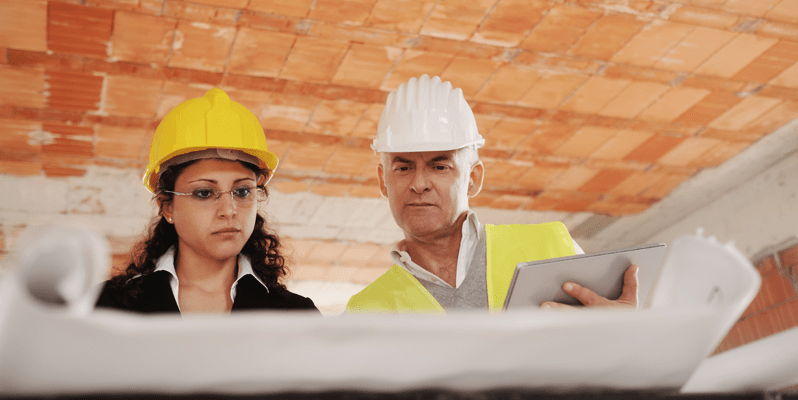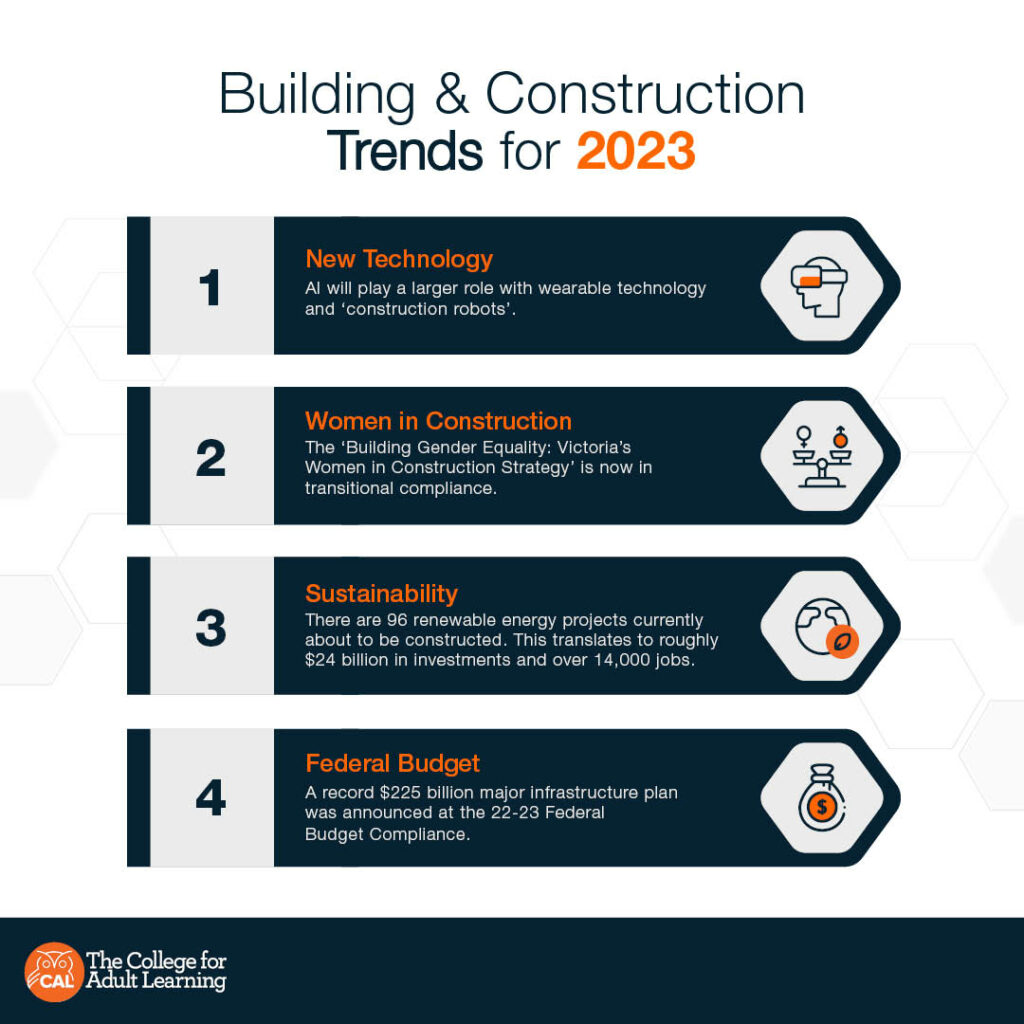
Building and construction management is an ever-changing and developing industry, with innovation and technology being the main driving forces behind these changes. In fact, the construction and building industry is one of the most adaptable and resilient industries in Australia.
So, if you’re in the building and construction industry or planning to be, what job trends should you be watching out for?
New technology in construction
The opportunities for expansion within technology in the construction industry are vast and constantly being researched. Here are six emerging technologies to look out for:
- Drones: Enables you to see the job site from above, giving all those involved a better idea of what kind of work is required to create the best building design for the area.
- Connected job sites: Allows for better communication and understanding of the project, sharing measurements, instructions and plans between sites – available at any time.
- 3D printing: Brings a plan, photo or drawing to life by building tangible models that impart a better sense of a project.
- Artificial intelligence (AI): The uses of AI are incredibly broad with endless applications during the planning and building stages.
- Wearable technology: Enables setting reminders and alarms, as well as being easily contactable on the go, without the worry of losing your phone onsite or carrying around a tablet or computer.
- Robotics: Becoming incredibly precise and accurate. Robotics can be used during the most repetitive tasks, freeing up people for more difficult cognitive tasks.
Over the past few years, these technologies have all been growing and innovating to make working in construction easier, safer and more streamlined across sites and people. Therefore, it is important to keep up-to-date with emerging technologies and how they can work for you.
Download our FREE 'Your Career in Building and Construction Management' Guide
Find the latest information in our eBook about a career in construction management, including current job opportunities, skills you need, salary information and more.
How many women are in the construction industry?
Currently, only 13% of the construction industry is made up of women workers. However, with recent government policy changes, the construction industry is no longer as male-dominated as it once was. Women from all walks of life enjoy the career opportunities that building and construction offer.
In the last two decades, the number of women taking advantage of the high salaries and workplace flexibility on offer in trades has doubled. In coming years, expect to see more women in the construction workforce and an increasingly inclusive industry for all involved.
Sustainability trends in construction
An increase in climate action sentiment in Australia is forcing companies to reconsider their practices in the workplace. Sustainability is especially important in building and construction due to the high potential of waste created in the process. Expect to see an increase in recycling schemes, a focus on reusing as much as possible and sustainably sourcing alternatives to common building materials.
Here are five straightforward practices to ensure you remain sustainable in the building and construction industry:
- Better waste management: Best practice is to segregate waste with clearly labelled and colour-coded bins, skips or bags, and implement a dedicated waste section on-site. This makes recycling materials correctly much easier.
- Deconstructing: Demolition is a messy, polluting procedure that has far less long-term gain than precise deconstruction. Deconstruction allows for a safe environment and a high potential to reuse or sell recycled materials in the process.
- Renewable and efficient energy use: Propelling the industry forward in innovation and career opportunities, renewable energy in Australia continues to grow. Solar power will continue to be in demand as clients look to incorporate this into new or existing builds.
- Source sustainable materials: Sourcing sustainable materials is a fantastic way to keep a construction site on ethical footing for only a slight increase in cost. Research and support businesses that are not causing deforestation and are reducing emissions.
- Reusing materials: Proper research can help you to source and build sustainably. Consumers are leading the way, by demanding environmentally friendly buildings and sustainable building materials in their projects.

Job opportunities in building and construction
Thanks to ever-changing and recent technology trends, there is an optimistic outlook on career progression in the building and construction industry as we move forward.
Building and construction management is an exciting and rewarding industry that will continue to flourish through the next decade. The need for construction supervisors, project managers and good communicators makes this industry a smart choice for the career-savvy professional looking to make a change.
What can you take from these job trends?
Opportunity! Now is the perfect time to upskill your qualifications and take the next step towards a rewarding and challenging career in building and construction. An online Diploma of Project Management (Specialising in Construction) (BSB50820) is the best place to start, designed for those wanting to move into senior construction project management positions.
Once you’re there, a Diploma of Building & Construction (Management) (CPC50320) will set you up to pursue opportunities in managing multi-million-dollar construction projects or running your own successful trade business.
Your Career in Construction Management
Do you want to learn more about construction management skills employers demand, emerging job roles and salaries, and recent industry insights?
Discover your career in construction management.
CONSTRUCTION MANAGEMENT CAREER PAGE






